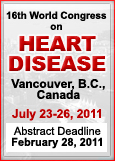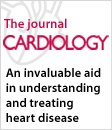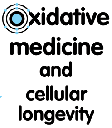|




| |
Growth factor grows
stem cells that help heal hearts |
November 11, 2003
ORLANDO, FL (AHA)
–
A
drug that stimulates bone marrow to produce stem cells helped
regenerate damaged heart muscle in one of the first studies of
its kind, according to a report presented at the American Heart
Association’s Scientific Sessions 2003.
The drug, granulocyte colony stimulating factor (G-CSF),
treats some forms of cancer. It stimulates bone marrow to
produce the different types of blood cells, including white
blood cells that can become depleted after disease or
chemotherapy.
G-CSF might help repopulate the heart’s muscle cells, which
in turn could help repair the damaged heart, said lead author
Chris A. Glover, M.D.
“Research has shown that there are cells in the heart that
come from bone marrow stem cells. We hypothesized increasing
these cells after a heart attack may help the heart regenerate
heart muscle cells, and this is supported by our results,” said
Glover, assistant professor of medicine at the University of
Ottawa and the Ottawa Heart Institute in Ontario.
“The main limitation of this study is that it included only
five patients and was not randomized. On the other hand, the
study’s strengths are that it explores the use of a novel
therapy, which is a simple treatment that any physician could
use to improve the outlook for heart attack patients.”
All five patients who received G-CSF had anterior wall heart
attacks, also known as large heart attacks. They had emergency
angioplasty, a procedure to open their vessels by inserting an
inflatable balloon that compresses the plaque and restores blood
flow.
“We wanted patients with large heart attacks in this study,
since they have the most to benefit from a therapy that could
regenerate the heart,” Glover said.
Within two weeks of the patients’ heart attack, doctors
injected G-CSF in the fatty skin layers once a day for four
consecutive days.
Researchers measured CD34 cells, a marker of stem cells, to
find out if the drug was stimulating stem cell growth. An
increase in white blood cells indirectly indicates that G-CSF is
working. After four days, blood cells increased about five-fold
and CD34 cells increased about 10-fold.
Before treatment and six weeks after treatment, researchers
also measured left ventricular (LV) ejection fraction, which
indicates how much blood the heart pumps out of its main
chamber. They assessed blood flow and metabolism by positron
emission tomography (PET) scan, which measures the heart’s
contraction and indicates how much heart tissue is viable.
All five patients were free of side effects or heart-related
complications at six weeks’ follow-up. Also at six weeks,
ejection fraction went from 27 percent to 35 percent, and the
patients had a considerable metabolic (viable tissue) recovery
from 59 percent to 75 percent.
Co-authors are R.S. Beanlands, R.A. deKemp, K. Mostert, L.
Garrard and H. Atkins. |
|
|
|